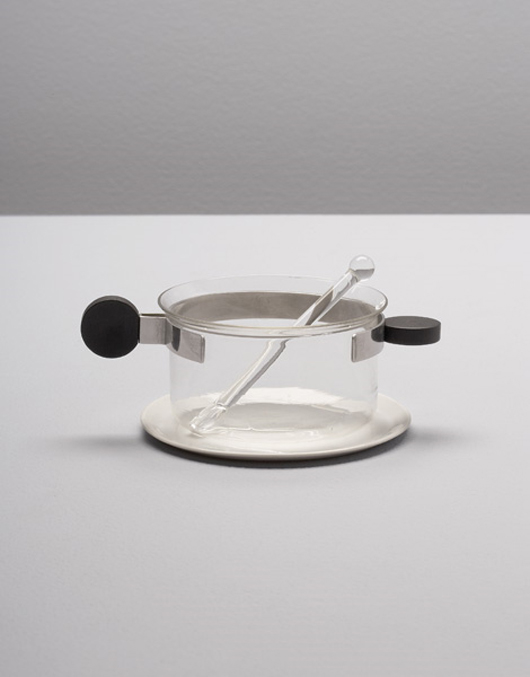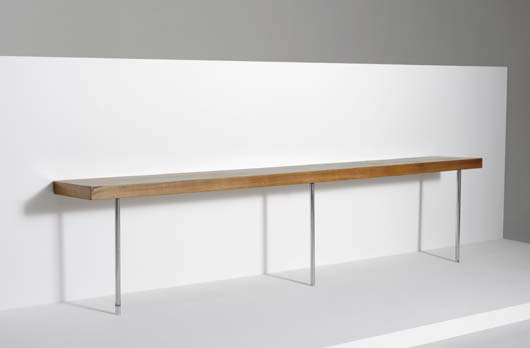
BERLIN (AP) – It’s all there: the well-known desk lamps, the original metal tube chairs and models of boxy white buildings.
Ninety years after the founding of the Bauhaus school, a new exhibition in Berlin brings together the collections of three museums for the largest celebration ever of the most famous and influential school of avant-garde art and design in the 20th century.
The 1,000 objects that are presented in 18 galleries at the Martin-Gropius-Bau museum in Berlin extend far beyond the familiar images of Bauhaus.
There are little-known paper cuttings by Bauhaus students, expressionist paintings by their teachers, metal sculptures, pottery, a chess board and even a sleekly designed baby cradle.
“We created a show that has never been seen like this before,” Annemarie Jaeggi, director of the Berlin Bauhaus Archive and one of the exhibit’s three curators, said Wednesday.
The show, titled Bauhaus – A Conceptual Model, already has drawn 17,000 visitors since it opened last week, she said.
“Often one thinks of Bauhaus as a style,” Jaeggi said. “But Bauhaus was foremost a school that – and this was typical for this modernist and upheaval time period after World War I – wanted nothing less than to change the world.”
Shaped by its three directors Walter Gropius, Hannes Meyer and Ludwig Mies van der Rohe, the Bauhaus school was formed in 1919 in Weimar to transcend the divisions that had separated arts and crafts, and emphasize a new modern aesthetic that could also be mass-produced.
World-famous teachers such as Vasily Kandinsky, Lyonel Feininger, Paul Klee or Oskar Schlemmer also put their imprint on the 1,250 students who were enrolled in the 14 years of the school’s existence.
According to the slogan “People’s necessities, not luxuries,” which was coined by Meyer, the “Bauhausers” – including Mies van der Rohe, Josef Albers and Marcel Breuer – created articles of daily use such as tea sets, chairs or set tables that could be afforded by all.
Pictures and models of landmark structures like the Bauhaus school building in Dessau, the flat roof homes of the school’s master teachers, as well as an entire Bauhaus complex in Berlin Bernau that served as a school for a German trade union, catch visitors’ eyes with their unadorned surfaces and clear lines.
The conservative German establishment was hostile toward the Bauhaus movement and its progressive ideas right from the beginning. Only six years after its founding in Weimar, the school had to move to Dessau in 1925, to evade politically motivated attacks. In 1932, the school had to relocate to Berlin, where it eventually was shut down by the Nazis a year later.
“It is one of the phenomena of Bauhaus, that it wasn’t weakened by persecution and oppression, but emerged stronger from every crisis,” said Jaeggi.
After 1933, many Bauhaus students emigrated and spread the signature style of Bauhaus around the world.
Even today, many of the exhibits such as glass ashtrays and models of clear-lined building structures seem surprisingly familiar.
“The idea that one can create mass products well, that are functional and even low-priced … is something that’s understood today, but back then it was really new and revolutionary,” said Jaeggi.
The exhibition, which was curated by the Bauhaus Archive, the Stiftung Bauhaus Dessau and the Klassik Stiftung Bauhaus, is open through Oct. 4. In addition to the show, there also are organized tours to private Bauhaus buildings in Berlin and Dessau.
The show includes some pieces from the Museum of Modern Art in New York, and 400 objects from the Berlin exhibit will be shown there in November.
___
On the Net: www.modell-bauhaus.de
Copyright 2009 Associated Press. All rights reserved. This material may not be published, broadcast, rewritten, or redistributed.
AP-ES-07-29-09 1003EDT
ADDITIONAL LOTS OF NOTE



